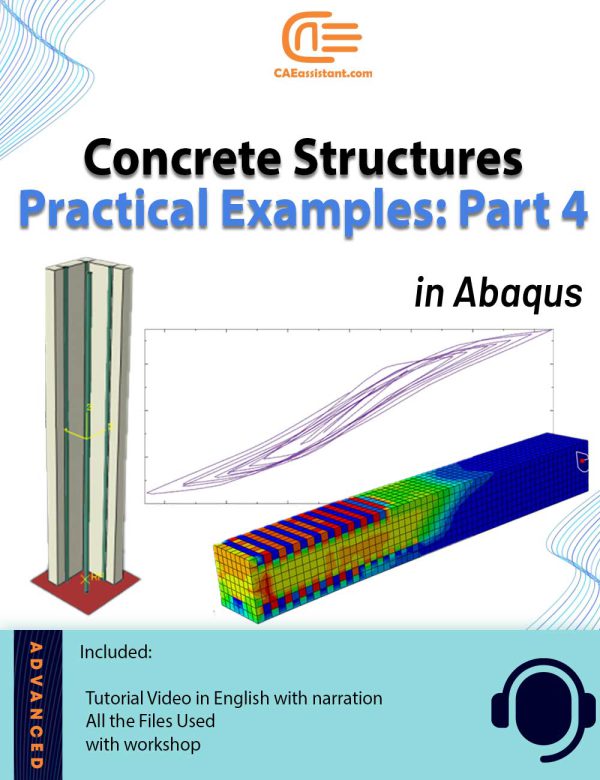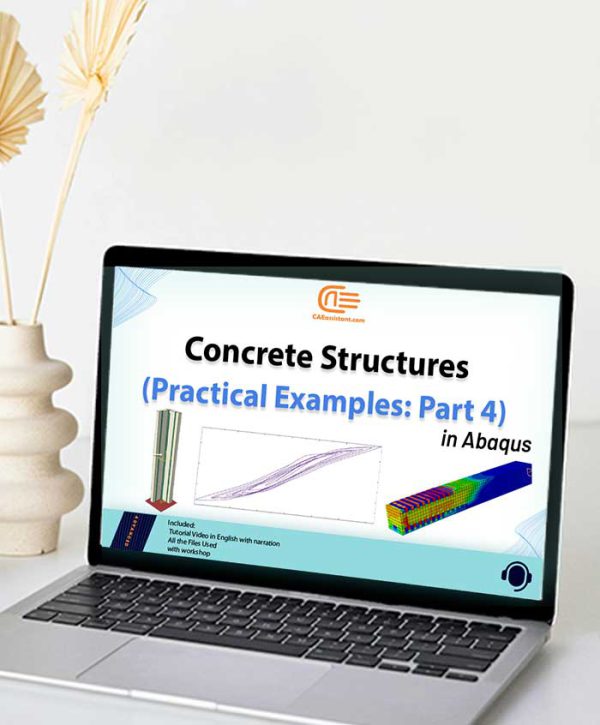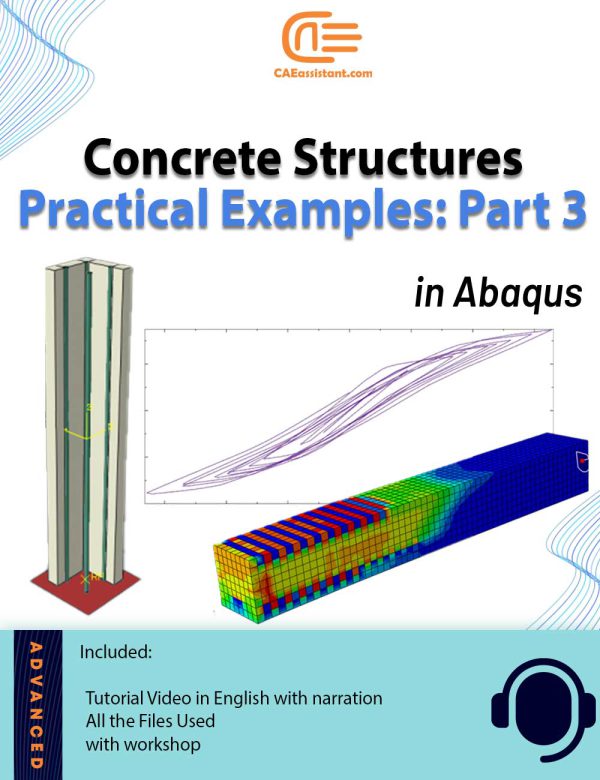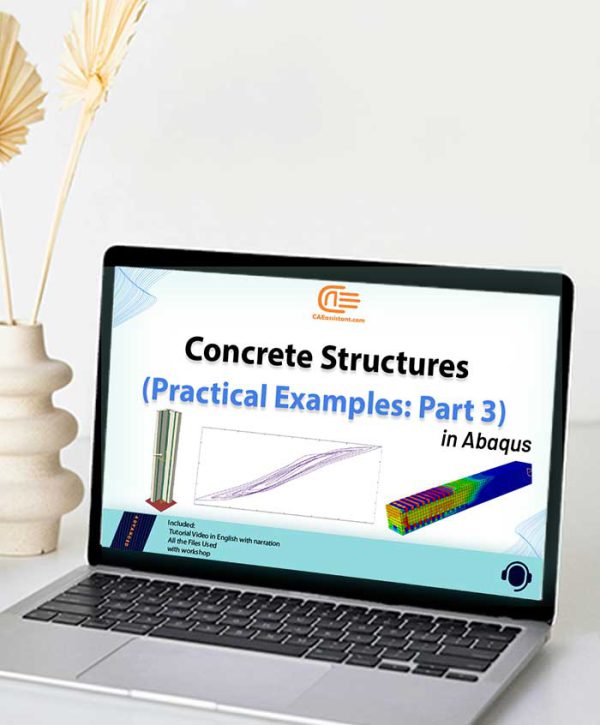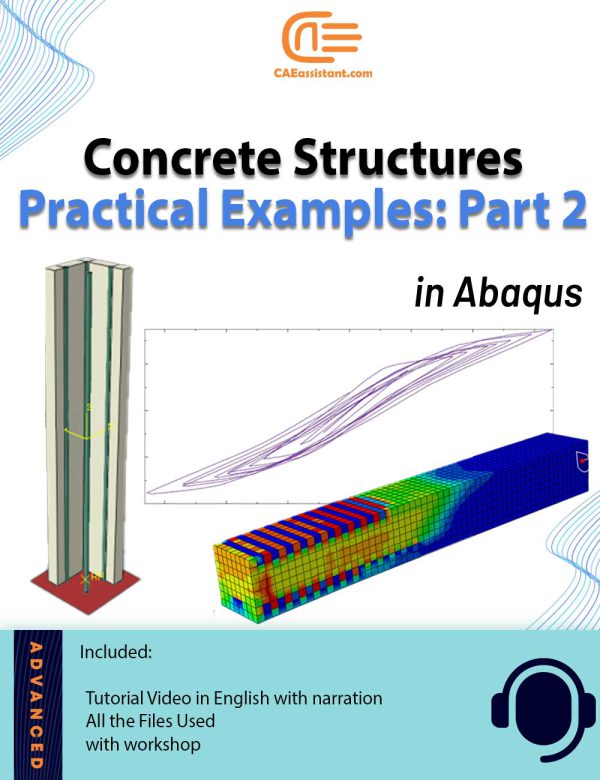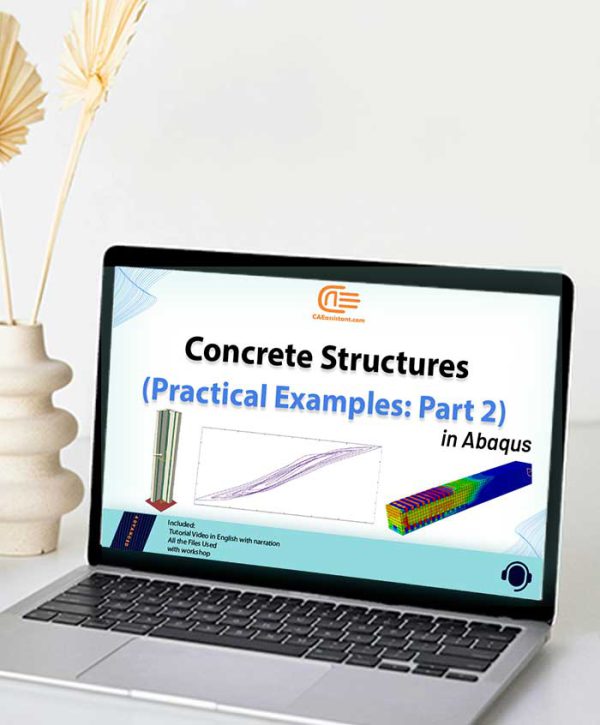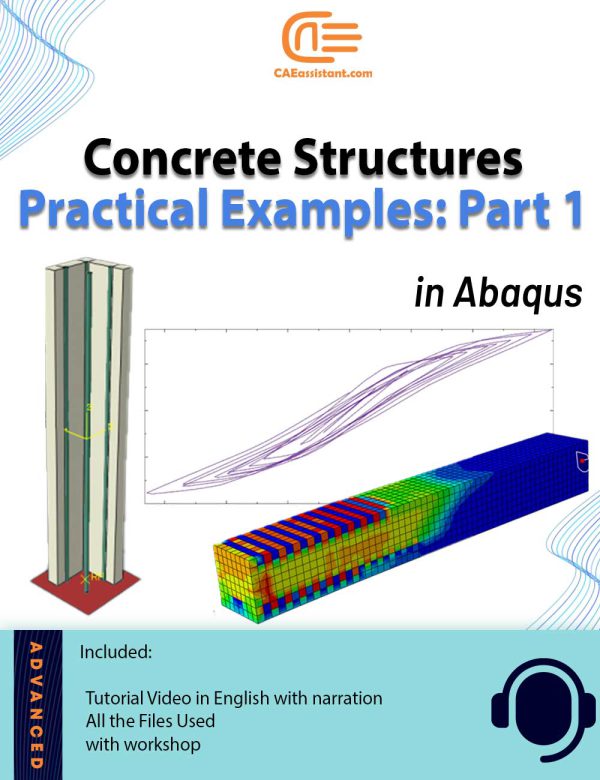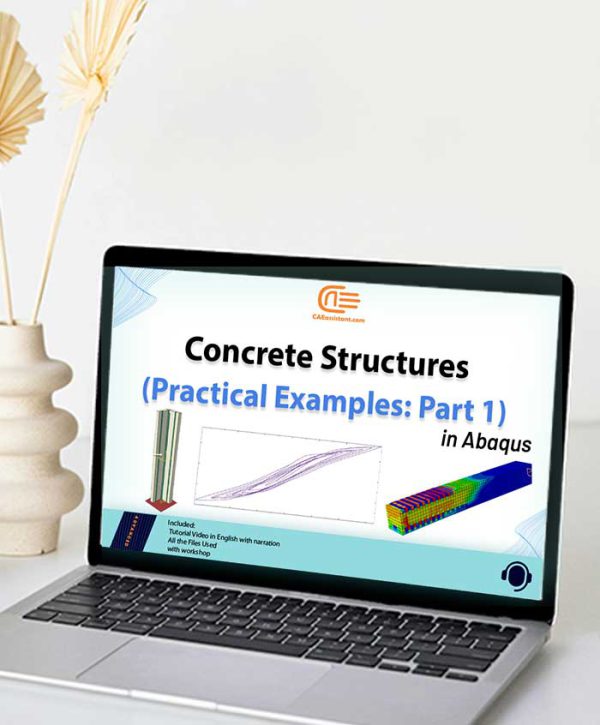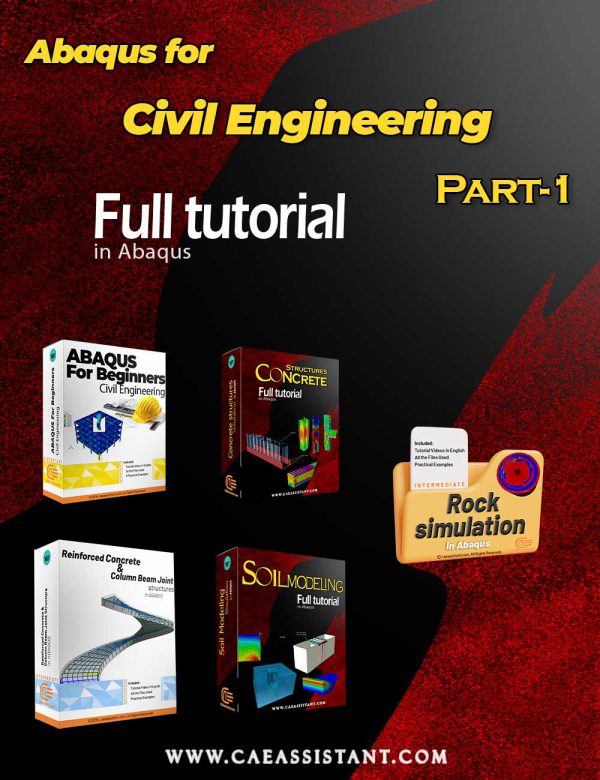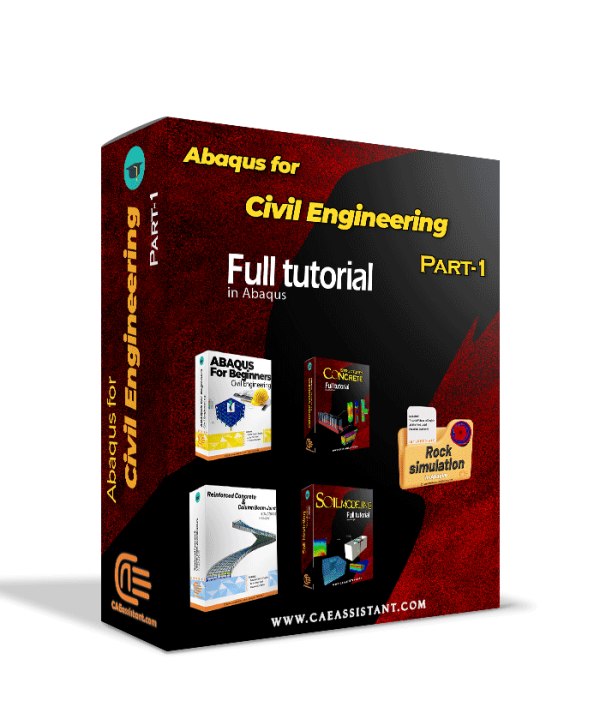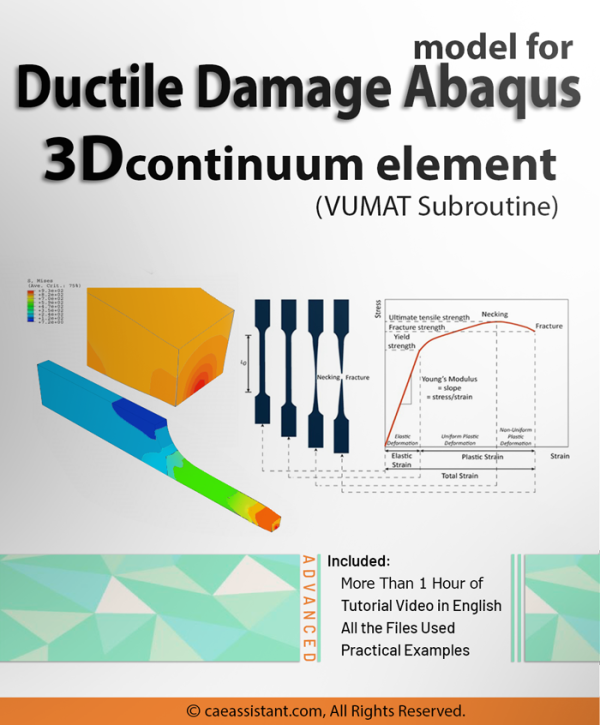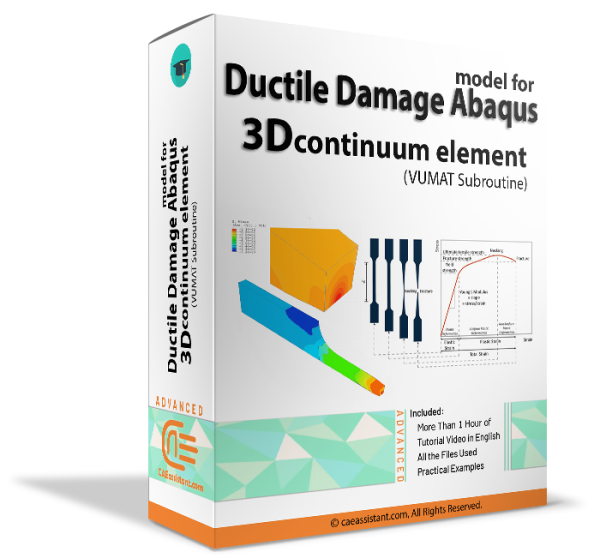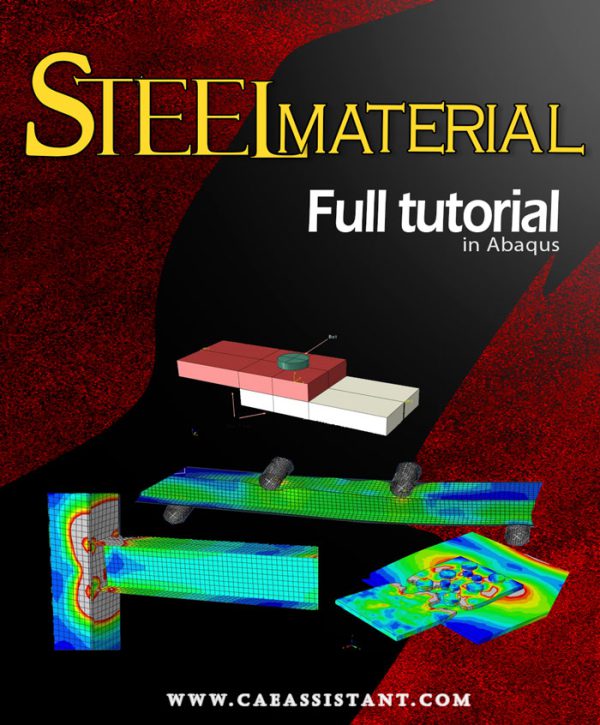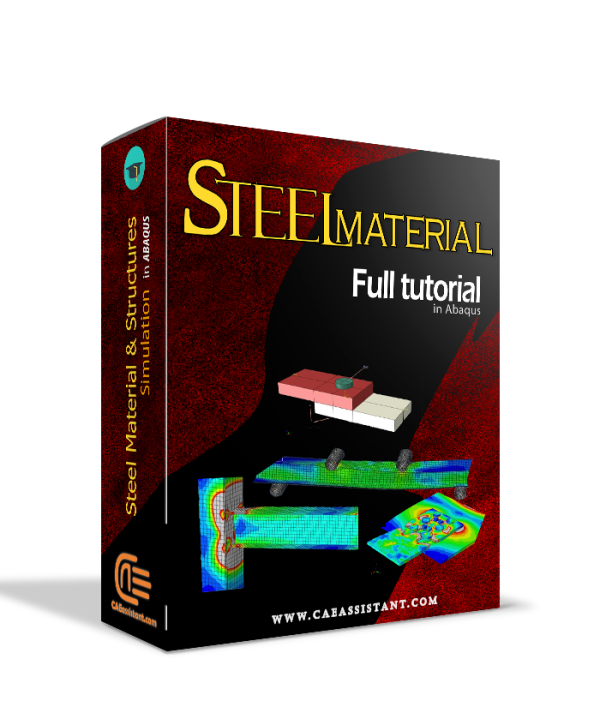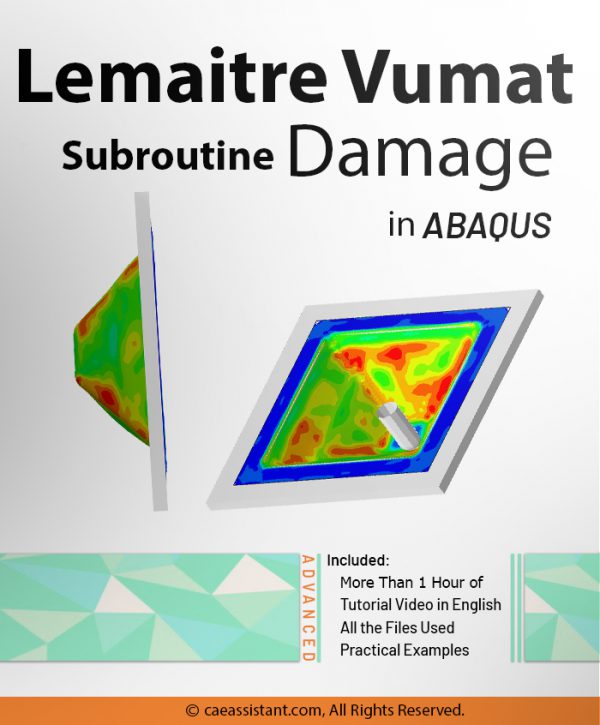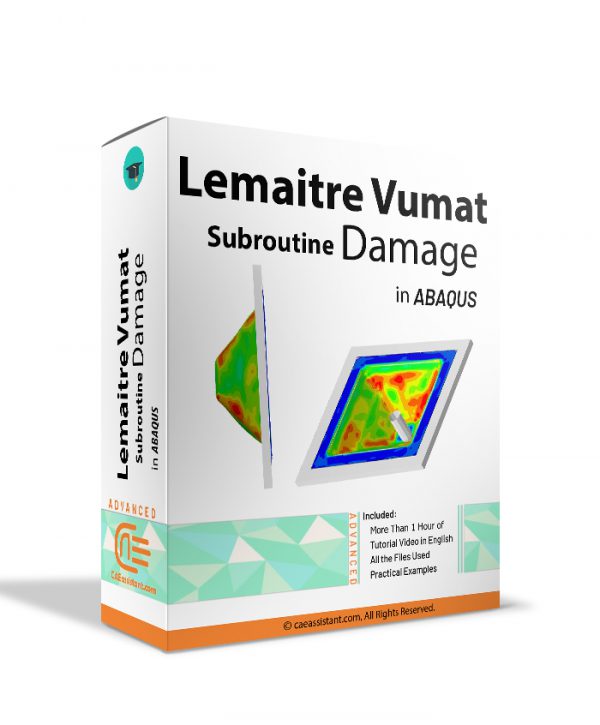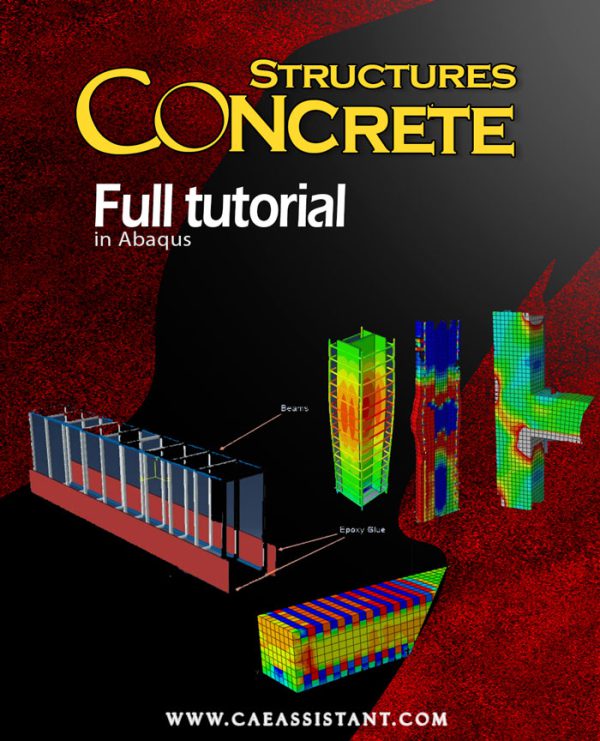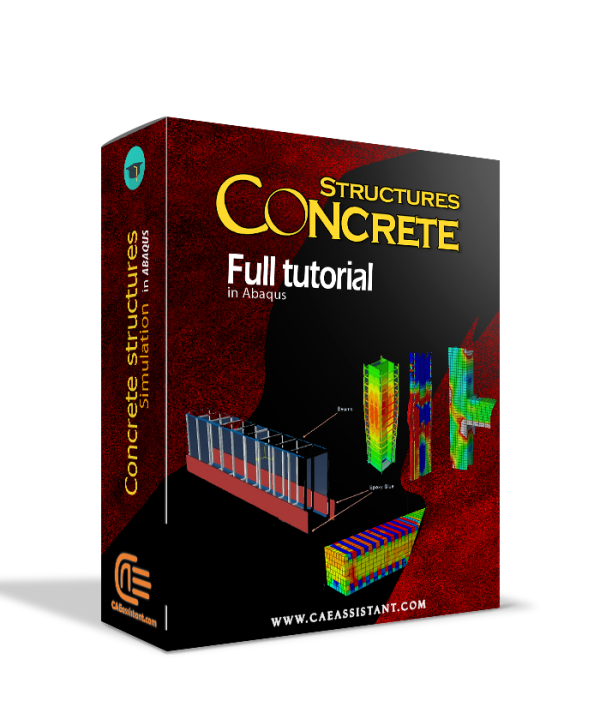Lemaitre damage
Abaqus Concrete Structure Modeling | Practical Examples (Part 4)
The package includes 5 workshops on topics such as concrete, beam-column structures, composites, steel rebars, Ultra-High-Performance-Fiber-Reinforcement Concrete columns, CFRP bars, hollow-core square reinforced concrete columns wrapped, damaged concrete beams, High Strength Concrete(HSC),ECC/Concrete Composite Beam-Column Joints, circular concrete-encased concrete-filled steel tube (CFST) stub columns, and etc. Every tutorial includes all needed files and step-by-step English videos and is explained from A to Z. For a more comprehensive lesson and theoretical presentation on the behavior and simulation of concrete structures, check out our full package on concrete structures, which includes detailed learning lessons. However, we have gathered all 20 workshops, along with several additional lessons in video format to help you gain more expertise on the topic, in the introduced package, which you can acquire for just 600 euros.
Abaqus Concrete Structure Modeling | Practical Examples (Part 3)
The package includes 5 workshops on topics such as concrete, beam-column structures, composites, steel rebars, Ultra-High-Performance-Fiber-Reinforcement Concrete columns, CFRP bars, hollow-core square reinforced concrete columns wrapped, damaged concrete beams, High Strength Concrete(HSC),ECC/Concrete Composite Beam-Column Joints, circular concrete-encased concrete-filled steel tube (CFST) stub columns, and etc. Every tutorial includes all needed files and step-by-step English videos and is explained from A to Z. For a more comprehensive lesson and theoretical presentation on the behavior and simulation of concrete structures, check out our full package on concrete structures, which includes detailed learning lessons. However, we have gathered all 20 workshops, along with several additional lessons in video format to help you gain more expertise on the topic, in the introduced package, which you can acquire for just 600 euros.
Abaqus Concrete Structure Modeling | Practical Examples (Part 2)
The package includes 5 workshops on topics such as concrete, beam-column structures, steel rebars, Ultra-High-Performance-Fiber-Reinforcement Concrete columns, CFRP bars, hollow-core square reinforced concrete columns wrapped, damaged concrete beams, and etc. Every workshop includes all needed files and step-by-step English videos and is explained from A to Z. For a more comprehensive lesson and theoretical presentation on the behavior and simulation of concrete structures, check out our full package on concrete structures, which includes detailed learning lessons. However, we have gathered all 20 workshops, along with several additional lessons in video format to help you gain more expertise on the topic, in the introduced package, which you can acquire for just 600 euros.
Abaqus Concrete Structure Modeling | Practical Examples (Part 1)
The package includes 5 workshops on topics such as concrete, beam-column structures, steel rebars, Ultra-High-Performance-Fiber-Reinforcement Concrete columns, CFRP bars, hollow-core square reinforced concrete columns wrapped, damaged concrete beams, and etc. Every workshop includes all needed files and step-by-step English videos and is explained from A to Z. For a more comprehensive lesson and theoretical presentation on the behavior and simulation of concrete structures, check out our full package on concrete structures, which includes detailed learning lessons.
Abaqus steel material and structures | Practical examples
Here in this package, numerous models of crack steel material structures modeling, such as the shear failure, FLD criterion and different metal damage theories in concrete, steel, dams, and bones are examined through workshops. Every tutorial includes all needed files and step-by-step English videos. For a more comprehensive lesson and theoretical presentation on the behavior and simulation of steel materials and structures, check out our full package on steel structures, which includes detailed learning lessons. The introduced package includes all the workshops within this package, along with several lessons in video format, to help you master the theory of steel structure simulation in Abaqus.
Abaqus for Civil Engineering Part-1
The "Abaqus for Civil Engineering” package is a comprehensive and invaluable resource designed to cater to the needs of civil engineering professionals, students, and enthusiasts alike. This all-inclusive package comprises a collection of several specialized tutorial packages, making it an essential tool for mastering various aspects of civil engineering.
With this package, you gain access to an extensive library of high-quality video tutorials that cover a wide range of topics within civil engineering. Each tutorial provides clear, concise, and engaging explanations of fundamental concepts, advanced techniques, and practical applications.
Ductile Damage Abaqus model for 3D continuum element (VUMAT Subroutine)
In this package, the continuum damage mechanics framework for ductile materials is implemented and developed in ABAQUS by VUMAT Subroutine.
Constitutive modeling is treated within the framework of continuum damage mechanics (CDM) and the effect of micro-crack closure, which may decrease the rate of damage growth under compression, is incorporated and implemented.
The present package has been organized as follows. In the Introduction section, the basis of the CDM in ductile materials is explained, and the applications of the CDM are stated. In the Theory section, the CDM model formulation is briefly reviewed, and with micro-crack closure, the effect is described. In the Implementation section, an algorithm for the numerical integration of the damage constitutive equations is presented. In the VUMAT Subroutine section, the flowchart of the subroutine, and the subroutine structure, step by step, are explained in detail. How to run the VUMAT Subroutine in ABAQUS will be presented in this section. In the Verification section, the validation and verification of the numerical implementation will be evaluated, and the stability, convergence and accuracy of the results will be investigated. In the Application section, the applications of using the ductile damage model in mechanical processes are presented, and the prediction of damage growth and failure in mechanical processes is investigated.
Abaqus steel material and structures Full Tutorial
Here in this training package, numerous models of crack steel material structures modeling, such as the shear failure, FLD criterion and different metal damage theories in concrete, steel, dams, and bones are examined through ten step-by-step tutorials. Every tutorial includes all needed files and step-by-step English videos and is explained from A to Z.
We also offer a similar budget-friendly package that includes all the workshops from this package. However, since it does not include the lessons, it is available at a lower price. You can purchase it on our website at a more competitive rate than similar platforms.
Lemaitre Damage model implementation with VUMAT Abaqus
The Lemaitre damage model is now widely used to deal with coupled damage analyses for
various mechanical applications.
In this package, Firstly, we try to introduce the Lemaitre damage model, including damage mechanics and formulation of the Lemaitre damage model. Then, writing the Lemaitre subroutine is reached step by step. To do this job, the flowchart of the subroutine, Writing the subroutine line by line, implementation of the subroutine in one element and verification is done. In the last chapter, we implement this subroutine in a complex problem, the upsetting process.
Abaqus Concrete structure Modeling Full Tutorial
The package includes 19 workshops on topics such as concrete, beam-column structures, composites, steel rebars, Ultra-High-Performance-Fiber-Reinforcement Concrete columns, CFRP bars, hollow-core square reinforced concrete columns wrapped, damaged concrete beams, High Strength Concrete(HSC),ECC/Concrete Composite Beam-Column Joints, circular concrete-encased concrete-filled steel tube (CFST) stub columns, and etc. Every tutorial includes all needed files and step-by-step English videos and is explained from A to Z. Package duration: +600 minutes
We also offer similar budget-friendly packages that include the workshops from this package.
- The first package includes Workshops 1 to 5.
- The second package includes Workshops 6 to 10.
- The third package includes Workshops 11 to 15.
- The fourth package includes Workshops 16 to 20.
Since these packages do not include the lessons and contain a limited number of workshops, they are available at a lower price (250 euros each).
However, we recommend choosing the current full package instead of purchasing parts 1 to 4 separately, as it includes all 20 workshops and exclusive lessons not available on similar platforms, while still being priced lower than competing offerings.
